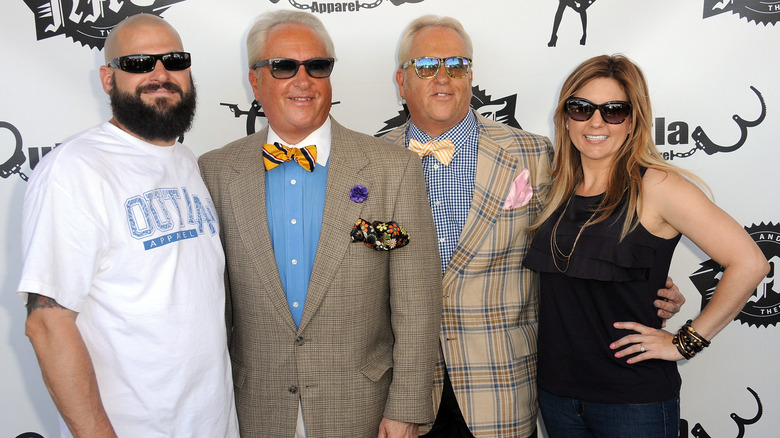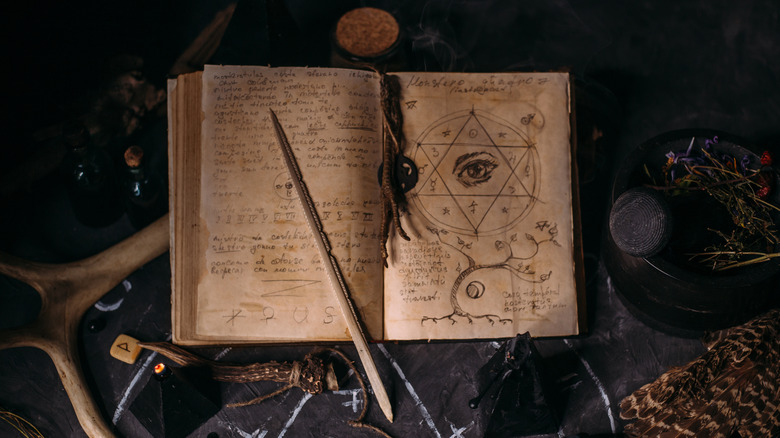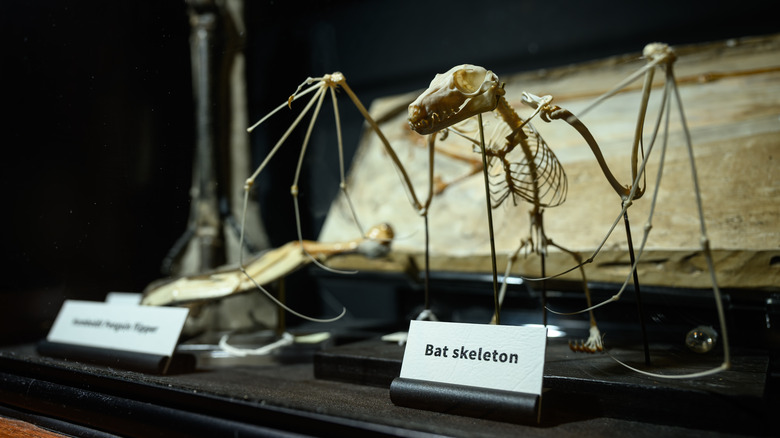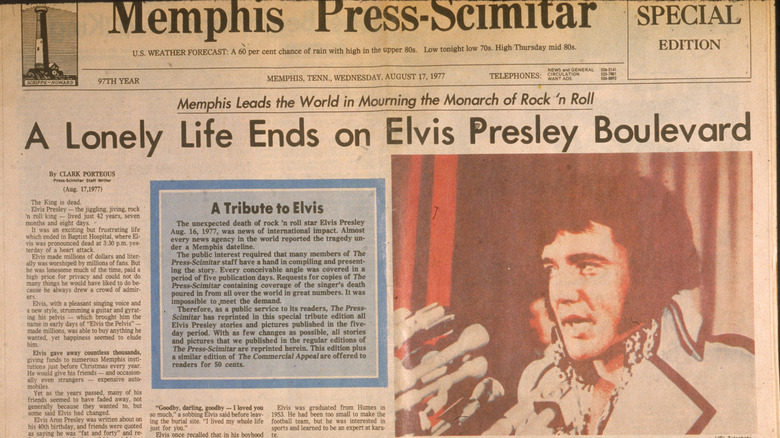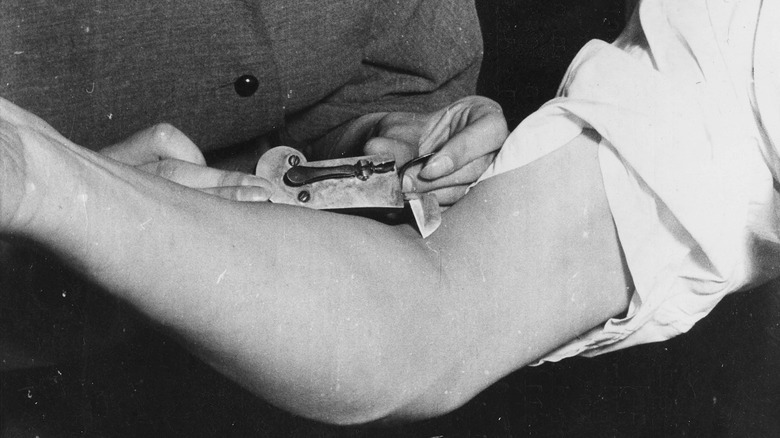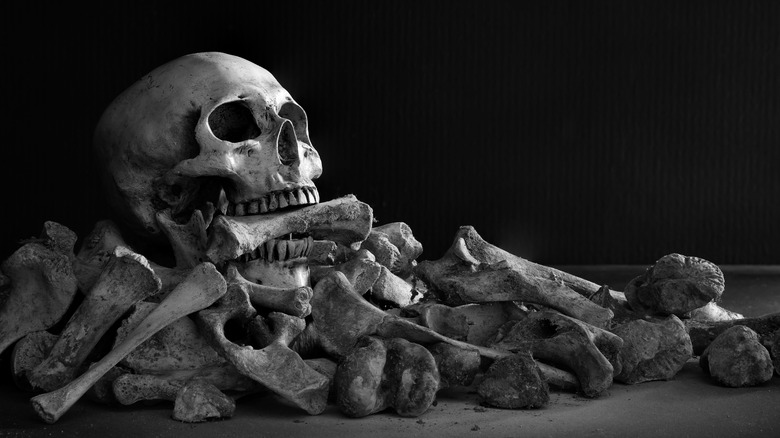The Most Messed Up Storage Wars Finds Ever
Sometimes it's best to not know what people keep behind closed doors or stuffed into abandoned storage units. And yet, curiosity plus the possibility of quick cash often wins out against caution. At least in the case of A&E's "Storage Wars," the U.S.' most famous combatively-named show about looting the auctioned possessions of people who couldn't pay their bills. If you miss your storage locker payment for three months in California you just might spot your grandma's old dentures in someone's grubby hands on TV.
"Storage Wars" is a reality TV staple at this point, having been on the air since 2010. Some of its featured cast members have become micro-celebrities in their own right, like couple Brandi Passante and Jarrod Schulz, who got their own single-season spin-off show in 2014, "Brandi and Jarrod: Married to the Job." Like other reality shows, "Storage Wars" has faced the usual claims about being the absolutely fakest TV around. A 2012 lawsuit against the show stated that "nearly every aspect of the series is faked," per ABC News, right down to staged storage lockers.
The viewing public of "Storage Wars" doesn't really seem to care about such things, however, and keeps coming back for more. Even if some locker contents are fake, some of it sure is bizarre and disturbing. We've got magical hexing items, dead animals, a dead person, a horde of newspapers about another dead person, and an old bloodletting device to drain you of precious fluids.
A creepy 'voodoo box'
Because we might as well start off with a light-hearted, only mildly grotesque "Storage Wars" find, we turn to Season 5, Episode 5, "The Return of the King of Montebello." In this episode, Brandi Passante and Jarrod Schultz crack open a musty-looking locker along with two assistants. Inside is a couch an old lamp, a raft with oars, some burned corn on the cob, and, uh ... a box of magical hexing objects? Depending on your tolerance for the weird and strange, the items that Brandi and Jarrod found could be anything from comical to freakish. Although, given the quirky background music and humorous editing in the clip, the producers of "Storage Wars" definitely wanted to downplay the freaky angle — especially because Brandi found it legitimately off-putting.
The magical find in question has been dubbed the "voodoo box," which is likely an insult to actual practitioners of Vodou of the Haitian variety of otherwise. There's some kind of small antlered skull, a bag of meatless chicken bones, a rattle, some totem thing with (possibly) chicken beaks attached to it, and a slender wooden carving of a dude with a chicken hat that attaches to the top of a staff. Right. So basically, if you're looking to engage in some ritualistic chicken sacrifice, this is your go-to locker. Brandi and Jarrod bought the locker for $900 and apparently made a profit on it.
Some illegal roadkill
Even at this point you'll probably start to see a pattern in the disturbing items found in "Storage Wars." Namely: bones and dead things. Enter Season 11, Episode 11, "Buyerina." In this episode, Darrell Sheets and his granddaughter Zoie sift through a locker that he purchased for $500. Along the way, we get to behold Darrell's profound gift for overpricing semi-functional junk, including a generously-described "wine rack" that's about to fall over for $50, a box of random Legos for a few hundred, an old, dirty pan for $90, and a thick wooden cutting board for $75. Also, there's a box of animal bones. And we don't mean dirty and haphazardly dumped animal bones — we mean full sets of surprisingly clean, individually wrapped skeletons.
In the episode, Darrell and Zoie head to a "natural history store" called The Bone Room to try and price their finds. The store proprietor takes a look at four of the skeletons: a bat, a crow, a squirrel, and a snake. While Zoie finds it all delightfully cool and educational, Darrell describes the whole thing as "morbid." The proprietor concludes that the animals were likely roadkill desiccated in a "home job" that wasn't quite as perfectly done as the official way: Using beetles to "eat the flesh off." Ultimately and disappointingly for the money side of things, it's illegal to sell the bones because they're roadkill. Womp, womp. We're guessing Darrell would've priced the set at $2,000 or something.
6,000 newspapers about Elvis' death
Just to mix things up a bit, this next item does feature death, but it's a celebrity death: Elvis Presley. We're guessing it also implicitly features bones because Elvis had some. But rather than being physically gross like a box of preserved animal skeletons or a plastic bag of chicken bones, this entry is disturbing in a creepily-obsessed-in-a-room-full-of-newspaper-clippings kind of way. For this we look way back to Season 1, Episode 7, "Senior Center Showdown," and cast member Dave Hester. In the episode, Hester acknowledges that he's purchased a locker full of paper. And indeed, there's nothing more than head-high stacks of old newspapers inside. But, they're head-high stacks of extremely well-preserved special edition newspapers reporting on Elvis' death — two separate newspapers per mini-bundle.
When Hester takes the papers to an Elvis collector and specialist, they say that each bundle is composed of a reprint of the Memphis Press-Scimitar from August 17, 1977, the day after Elvis died, and an original of The Commercial Appeal from the same day. The collector priced the Memphis Press-Scimitar at $5 each, and The Commercial Appeal at $10 each. Hester found 6,000 bundles in the locker, which equaled $90,000 for the find. Ultimately, someone went through a lot of work to put the papers together and store them. Maybe obsessions do pay off in the end — at least for whomever buys your abandoned stuff.
A 19th-century bloodletting device
You know what you totally don't need? All that blood inside. At least that's what folks thought for literally thousands of years until the late 19th century. The idea was that Illnesses arise from an imbalance of four bodily fluids, or "humors" as the Greeks called them — blood, phlegm, yellow bile, and black bile. In order to purge the body of bad mojo, maybe reduce a fever, etc., sometimes you just had to get rid of some blood. Well, back in the final episode of "Storage Wars," Season 1 — "Live and Let Bid" — Darrell Sheets discovered a medical bloodletting device built just for this purpose.
Sheets found himself rummaging through the locker in question and looking at some vinyl records and a fog machine, of all things. He found a "strange little music box" that turned out to be the bloodletting device in question — or medical bleeder — from the mid-19th century. While we don't know specifically how the device was used, someone would have wielded it to cut a patient and let them bleed. Also, there's no word on whether or not the owner of the storage locker was a vampire. Sheets, for his part, wound up getting $500 for the bleeder, which is a pretty decent amount seeing as he paid $250 for the locker.
An actual human skeleton
It seems many of the most messed up "Storage Wars" finds come from the show's 1st season, and Season 1, Episode 18, "Skullduggery" is another on the list. The title of the episode is a literal description of what happens — Dave Hester climbs into a veritable flotilla of storage locker junk to dig out what's inside. He finds a dull-looking framed map of the United States, some bins with clothes, some books, and what appears to be a musical instrument case. Upon opening up the case Hester curses, lets the lid fall, and then gingerly re-opens it. Yep, that's a human skull inside. Or as Hester says, "This is definitely a human f****** skeleton here. Hopefully it's not an unsolved mystery or anything like that."
Thankfully, Hester's fears were unfounded. The skull had hinges on it, and some bones — like the wrist bones — had nylon strings running through them. The entire skeleton was perfectly clean, too, and not brown like it would have been if it belonged to a murder victim. In other words: It was used by a medical student at a university or something. The proprietor of the store where Hester took the skeleton appraised each bone individually, pricing the skull at $700, the hand at $300, the femur at $90, each vertebrae at $20, and so forth. The whole skeleton was valued at $1,670 against $1,350 for the locker. As Hester said, "One man's bones pays another man's bills."
